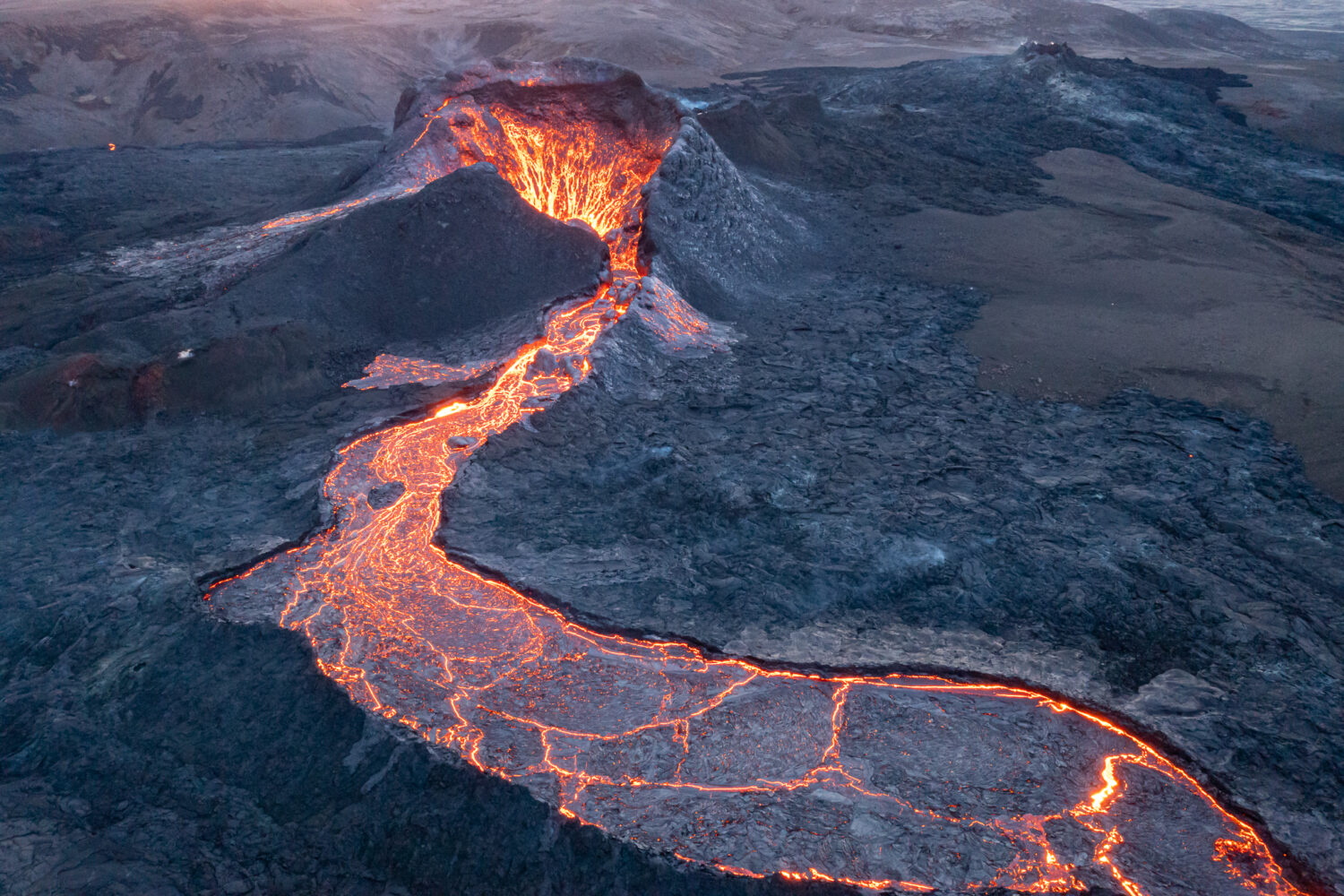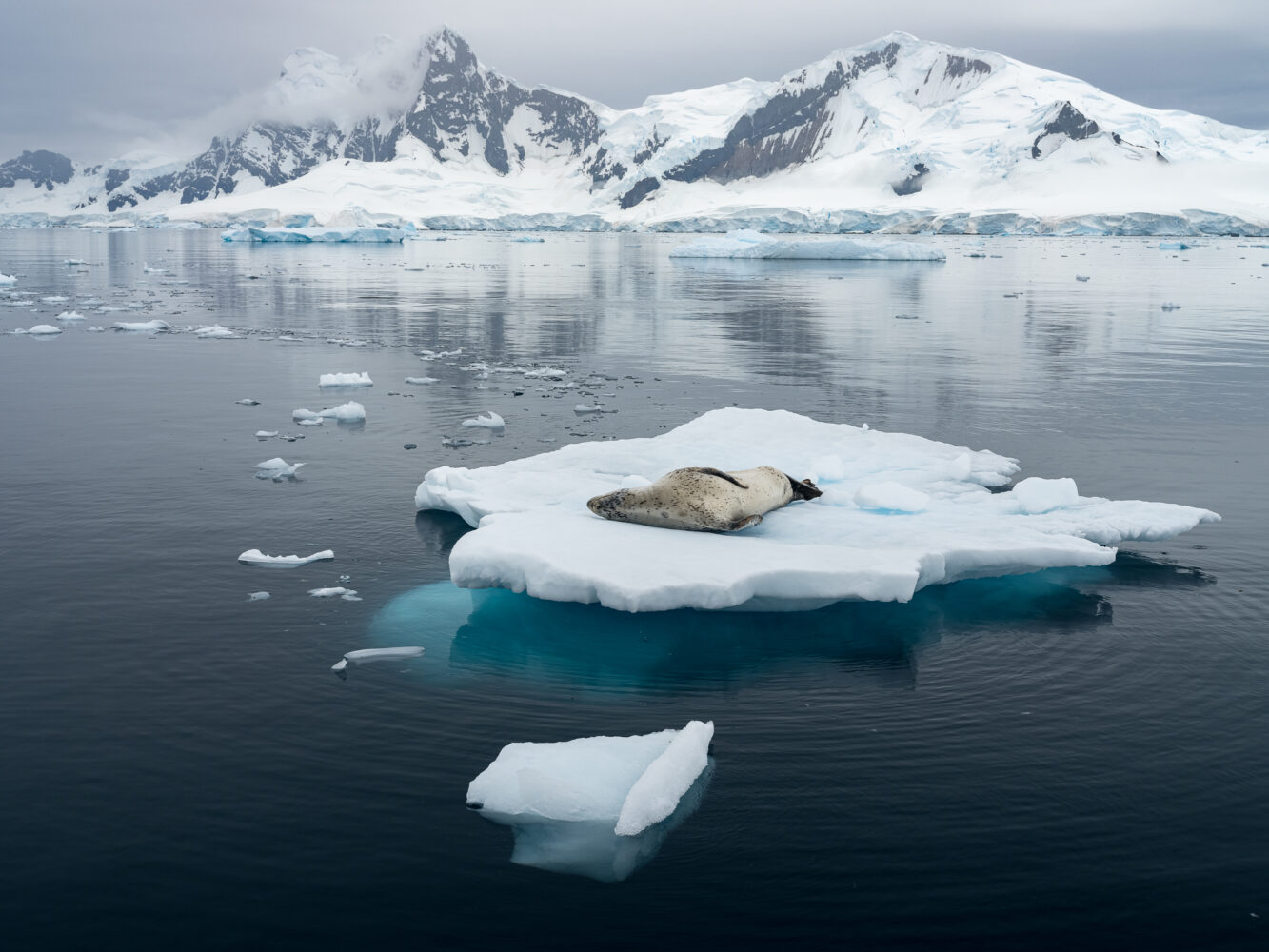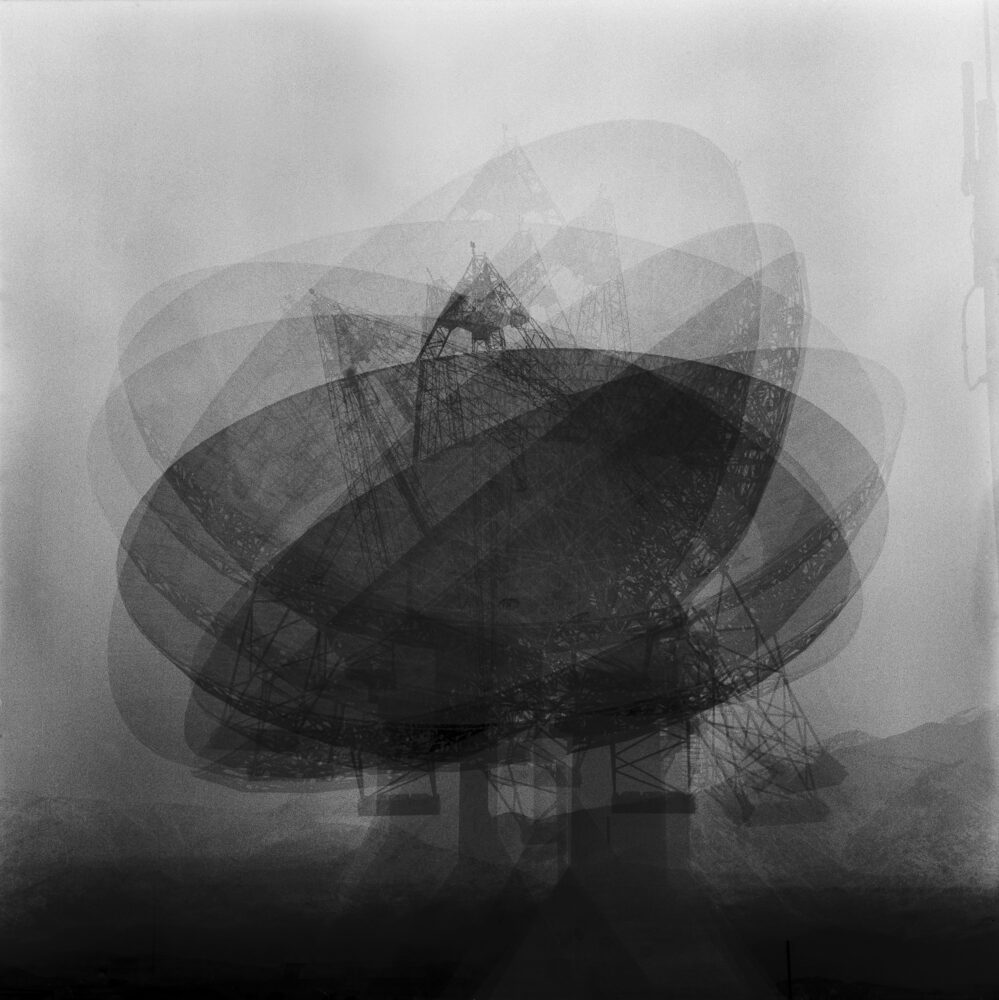Good photography takes… hold on a second… time. So does bad photography for that matter, though experienced photographers tend to develop a special understanding of the various aspects of time at play in their art. Henri Cartier-Bresson’s famous concept of the decisive moment is routinely connected with photography of fast action in dynamic situations – an online search for “Outdoor Photographer” and “decisive moment,” will lead mostly to articles about capturing wildlife action – but landscape photographers routinely work in dynamic scenarios as well, so the concept applies to that genre equally, as it does many others. It’s all about the photographer being in the right place with the right perspective at the right time, ready to photograph the ephemeral alignment of subject relationships, form and line, light, weather, and so on, in a way that results in an effective, compelling composition.
Such moments are particularly special because, as the second law of thermodynamics in physics demonstrates, within an isolated system such as our universe entropy either remains constant or increases. Entropy in the universe as a whole never decreases, and therefore the universe can never return to exactly the same state as the moment you made a particular photograph. Time cannot move backward. Your last photograph can never be made again in precisely the same way. It is unique, though some may seek to make images that approximate what has already been done.

For most photographers, the link between time and photography starts with the obvious: shutter speed, or the period of time over which light is recorded and accumulated in the camera. If we want to freeze motion we want a shorter exposure, and if we want to blur motion, we want a longer exposure, right? But are we photographing a hawk swooping in on prey with a long telephoto (which may require a shutter speed of 1/4000th of a second or more to render the bird tack sharp, even with well-practiced panning technique) or are we photographing lava flowing as slow as molasses through a volcanic landscape with a wide-angle lens on a tripod-mounted camera (which may keep the lava sharp at a relatively slow shutter speed of 1/15th of a second)? Perhaps we want to record the sense of motion in the lava, in which case the decisive moment for the picture in the mind’s eye may call for an exposure of many seconds that isn’t any longer a “moment” in the conventional sense at all, but it is still right place, right time, right composition.

Movement and motion and the way these are suggested in a still photograph are of course inextricably linked to time, though in different ways. Movement implies displacement – a journey from Point A to Point B – through both space and time, or time only, to the extent that an object can be stationary relative to the observer, though it’s always moving relative to most of the universe. Motion on the other hand is merely the state of not standing still (again relative to the observer). Our visual perception has evolved to respond to motion as an instrument of survival, since motion implies a change in our environment to which we may need or wish to react, possibly in response to danger or opportunity, such as the arrival of a predator or prey. Perceived motion therefore makes a strong visual appeal, commanding our attention. I say “perceived” because while a still photograph can’t show us motion (unless combined with other still images into the illusion of the motion picture), it can show that motion took place. A photo can also record that a movement occurred over time as subject matter moved through the frame or as the frame moved relative to the subject, or it can give the impression of movement where there really is none, through relationships of graphic elements or of colors and tones.
One wonderful quality of photographs is that they can be made in such a way that the content seems timeless, such as in a black and white print of a natural landscape that gives the impression it could have easily been made either ten, fifty, or a hundred years ago (see the accompanying image from Valahnúkur, Iceland). Without knowing the provenance of such a print, it can be impossible to tell its age within a decade or two based on visual scrutiny of the image alone. Properly made and cared for, a photograph can appear largely unchanged as years pass or as fashions shift. The way we view or interpret the photograph may change relative to cultural evolution, awareness, tastes, or other subjective factors, but the content is fixed. That said, like the patina of a bronze sculpture, time does eventually impose a certain evolution on the life of a photographic print.

Many of my favorite photographs don’t give away the whole story at a glance, but rather hold back a secret or two to be discovered later. After fixing an image of a particular moment in time, we can then spend many minutes or hours inspecting and scrutinizing it, perhaps over the course of many years, decades, or even generations. This is a revolutionary departure from the way humans have historically experienced happenings in our passage through time. Even in photographs we’ve been familiar with for ages, it isn’t uncommon to find some interesting but previously unnoticed detail that adds to the depth, meaning, poetry, or mood of the image. Typically, this occurs because the dominant subject matter and relationships in the image are so strongly presented that we think we’ve seen and comprehended the content of the picture at first glance, and don’t initially peer into the subordinate recesses of the composition.
The relationship of the dominant and secondary content of a photograph also tends to create a visual flow that leads us to see and digest the elements of the image sequentially, beginning with the most dominant, rather than experiencing the entire image simultaneously. In a movie or a musical performance, the temporal flow of the piece is imposed on the audience. In a still image, however, the photographer has much less control over this flow. While the photographer can attempt to influence the order in which elements of the composition are scanned by the viewer’s eyes, and while the eye is repeatedly drawn back to the dominant subject and tends to be guided by strong graphic relationships, various studies have shown that the sequence in which secondary elements are scanned by the eyes varies greatly from person to person.
For me, much of the power of photography of the world as it is arises from the impression that we are sharing in the real-life experience of another human being who is a witness of the time in which the picture is made. After all, a photographer and a painter can make similar pictures of the same scene, but for the painter, it doesn’t matter much if they make it now or twenty years later, or 1,500 years later. The painter doesn’t even have to have been there to witness the event himself (renaissance paintings depicting the life and death of a certain carpenter in Palestine come to mind). The photographer, on the other hand, is almost by definition a witness to reality, and the most impressive photographs successfully capture an exceptional composition that fairly depicts an exceptionally authentic moment. I therefore find it disappointing when photographers who are supposedly showing us their personal view on wild nature engage in cynically motivated practices like sky replacement, adding content that wasn’t there, repositioning subject matter, cloning out distracting elements, or super-saturation of color, though there is nothing inherently wrong with these practices unless the photographer is representing their work as documentary, and therefore making them subject to journalistic and/or scientific ethics regarding the documentation of evidence.
A photograph can also be timely, made at the best possible time, at the right time, or just in the nick of time before an opportunity disappears. Many conservation photography projects I’ve worked on have certainly been timely, using photographs produced on assignment for the specific purpose of documenting the landscape, wildlife, and local communities that would be impacted by ill-conceived development projects on the verge of breaking ground, such as a mountain-top-removal coal mine in a wild Rocky Mountains watershed in British Columbia, or huge dams that would have drowned vast valleys in Chilean Patagonia. All photographs that are particularly relevant in the context of recent or impending events or public discourse can also be said to be timely.
Our relationship with time goes far beyond these fundamentals, however. How we make use of our time as photographers, utilizing time to best advantage, either slowing down and taking advantage of the luxury of time to help the process of seeing, mindfulness, and visualization, or being well practiced and planning ahead so that one can work efficiently and effectively within limited time when conditions are quickly changing toward the optimal moment.

My photo of aspen trees in fall color accompanying this article is a perfect example. Early in the morning prior to the making of this picture, I was photographing another composition nearby while all was illuminated by cool blue of the sky above. No warm light illuminated the scene. Then, as the light of the rising sun worked its way down the slope of the canyon, warm light eventually began to bounce in, providing a little color contrast in the aspen trunks, though I didn’t see this happening as I was busy with another composition I was photographing in a different direction. The crescendo, however, screamed for my attention when the sunlight finally lit up the yellow canopy of aspens behind me, kicking beautiful warm light into the foreground aspen trunks, contrasting perfectly against the trunks in the background still lit by cool blue skylight. I was using a 4×5 view camera with Fujifilm Provia transparency film at the time, which took some time to set up for each composition, so there was no way I could pull off the shot in time before direct sunlight entered the composition, rendering harsh contrast that would ruin the mood and aesthetics of the scene. This was the decisive moment, and I’d missed it. Having scouted the situation however, I returned the next morning, unrushed with plenty of time to get set up, refine my composition, carefully meter the proper exposure, and be ready when the light was just right.
Times have changed. Today, I can use a highly responsive image-stabilized Fujifilm GFX medium format camera system to capture fleeting serendipitous moments in dynamic situations, hand-held, with dynamic range that blows slide film out of the water, and exceeds by four times the resolution of the state-of-the-art Heidelberg drum scans I have made from my 4×5 film portfolio. In my photograph of a leopard seal on ice in Antarctica, I was photographing from our chartered expedition vessel while everything was in motion: the ship was slowly under way, the various pieces of ice drifted lazily on the currents, and of course the mountains moved relative to me and the objects in the foreground. As is my habit when shooting from a moving platform such as a ship, helicopter, or safari vehicle, I looked ahead to see what might slide past the ship and serve well as a foreground in relation to the context-setting glacier-covered mountains in the distance. When I saw the leopard seal on ice, I framed up the anticipated composition with the mountains at the top of the frame and space for the iceberg and seal to drift into the frame. The timing was critical, as I wanted the smaller block of ice in the middle of the foreground as a visual anchor, and shooting a burst at a rate of five frames per second gave me the option to choose the frame with the best graphic arrangement. My goal here was to minimize or eliminate the pervasive sense of the relative movement that I was experiencing in reality as I viewed the scene, to create a sense of tranquility and timelessness.

More and more, photographers are making use of the multiple exposure capabilities of today’s cameras to solve technical and creative problems, rendering a single final image from a set of component frames separated at least temporally if not spatially and compositionally. These include focus-stacked compositions with expanded depth of field, high-dynamic-range exposures rendering a vast range of detail and tone from the shadows to the highlights, as well as more traditional multi-frame compositions that bring together elements from two or more individual exposures, such as the image of the forty-meter radio telescope at Owens Valley Radio Observatory in California.

In an attempt to give the impression of searching the cosmos, I made twelve exposures on a single frame of film over the course of an hour to imply the movement of the dish as it was periodically re-tasked to look at blazars in various galaxies across the sky, movements that I could witness in real time but that were impossible to render in a single exposure. In this case, the decisive moment was the instant I had the idea to make use of multiple exposure to solve the creative problem.

While much photography attempts to document our experiences of what we see out there in the world, we also have the option to use our photographic tools like a painter’s brush, using time and the palette of tone and color we position before the lens to create new images that emerge from our imaginations. While teaching a workshop last November in Paris, I took our group out to photograph the “City of Light” at night. After making a few more conventional night scene compositions in the Cour Carrée square at The Louvre, I decided to play a bit. I started a ten-second exposure, pointing my lens at the walls and windows of the court while I turned slowly around in a full 360-degree rotation, simultaneously rotating the camera 360-degrees around the optical axis. As expected, the lights of The Louvre “carved” sweeping lines through time as the camera scanned the scene, and I saw potential to create some strongly graphic abstract compositions. I made several exposures, adjusting my technique with each frame. I liked the quality of design, but the color palette really looked like tungsten and sodium vapor lights against deep shadow; in the interest of creating a completely abstract image that didn’t describe the reality of its origin I decided to invert the curve in processing, creating a color negative in which black became white, and yellow became blue. In addition to using time as a component of the composition, this type of work is a result of the luxury (or necessity?) of taking time to play, to experiment, to apply what is learned from each attempt, knowing that we have time to practice, to try various iterations, with the knowledge that one frame will likely stand out from the rest as the decisive composition, or possibly, the decisive moment.